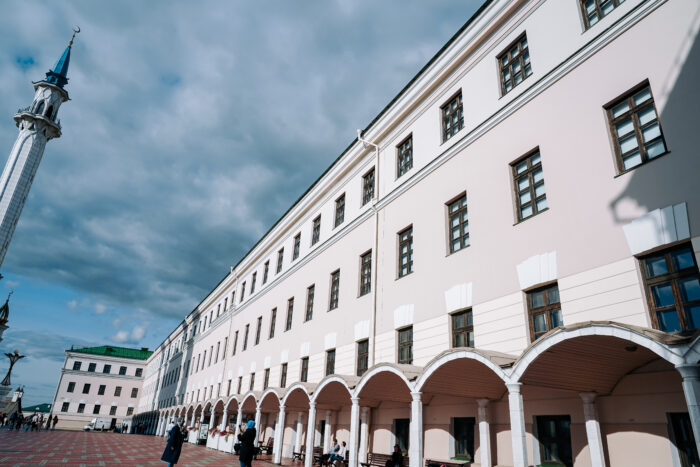Junker Military School Building
описание объекта
Здание построено в 1840-е годы в центральной части Казанского Кремля под руководством архитектора П.Г. Пятницкого. Первоначально двухэтажное кирпичное здание служило в качестве казармы для кантонистов (сыновья военнослужащих, в силу происхождения обязанные к военной службе). В 1860-е годы здание было передано военному училищу, которое вскоре было перепрофилировано в юнкерское училище (в армии императорской России юнкер – промежуточное военное звание между младшим командующим и офицером). В 1909 году училище было преобразовано в военное училище для подготовки пехотных офицеров среднего звена.
В советский период был надстроен третий этаж. В 1919 году в здании проводились пехотные командные курсы, позднее – Объединенные Казанские мусульманские командные курсы. В марте 1937 года школа становится пехотным училищем. В апреле 1941 года в здании шла подготовка специалистов для бронетанковых и механизированных войск. Учебное заведение получило название Казанское танковое училище. После Великой Отечественной войны здесь размещались учреждения разного профиля.
Протяженный корпус здания выполнен в чертах позднего русского классицизма, имеет симметричную планировку, строгий монументальный внешний облик. Три входа в здание украшены коваными навесами, выполненными в технике чебаксинской ковки (стиль художественной ковки по металлу, названный в честь села Чебакса), с вплетенными розами, васильками и маскаронами (изображение, включенное в архитектурную композицию). Фасады корпуса оштукатурены. Первый этаж украшен рустом, окна имеют профилированные наличники. Главный вход снаружи акцентирован навесным металлическим фронтоном.
В 1994-1995 годах под руководством архитекторов Г.М. Гаязовой, В.О. Поповой, И.Б. Харисовой здание было отреставрировано, а в 2001-2005 годах здание адаптировано под музейные экспозиции.
В настоящее время в бывшем корпусе Юнкерского училища находятся Центр «Эрмитаж-Казань» и Музей естественной истории Татарстана.





